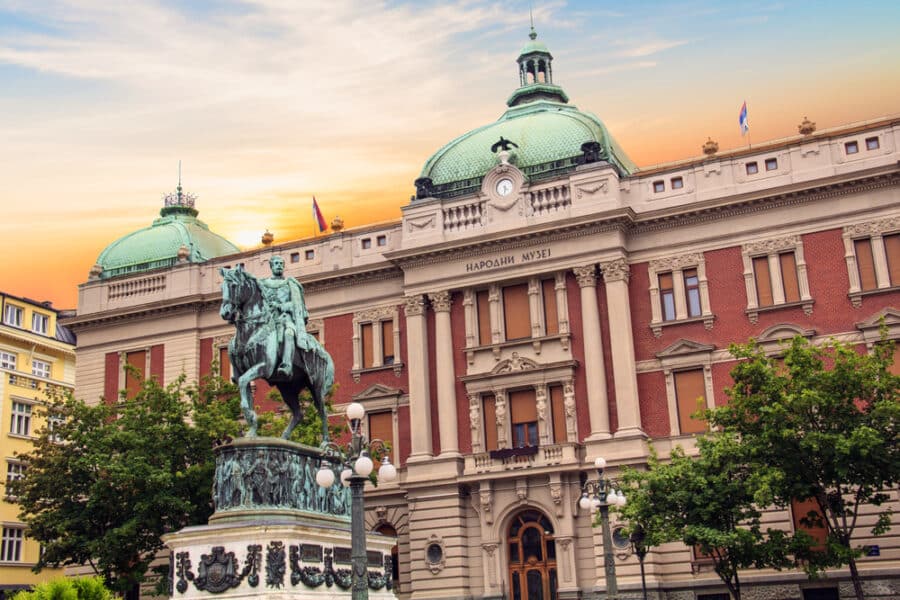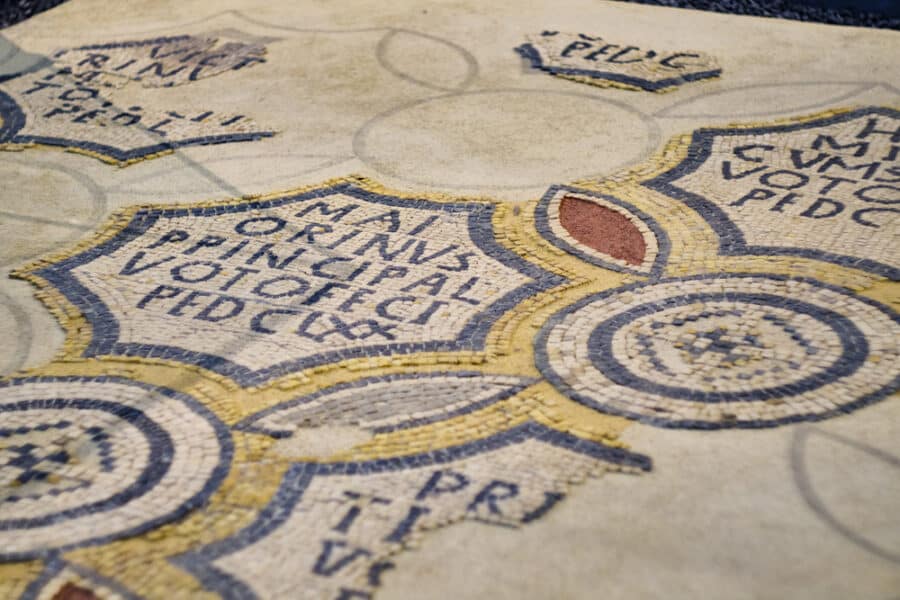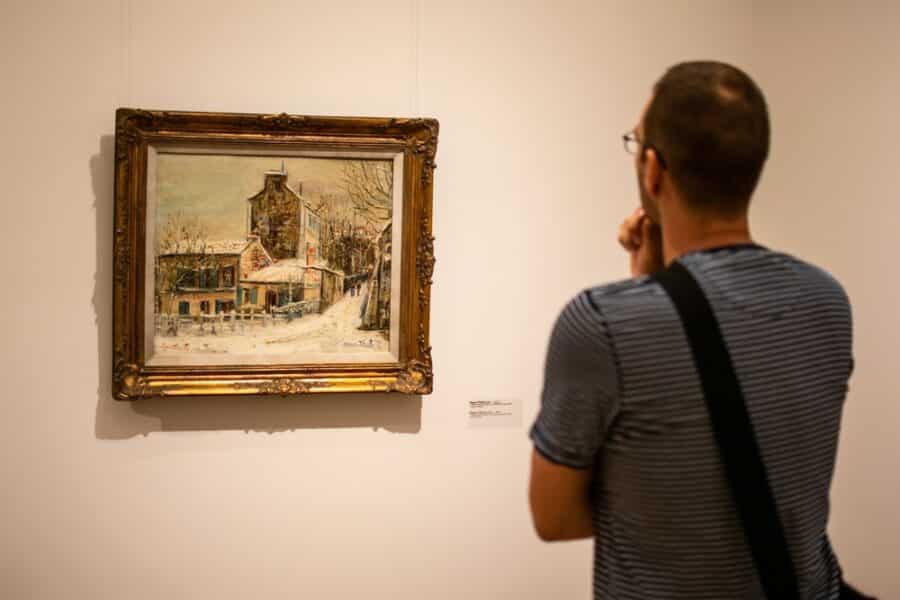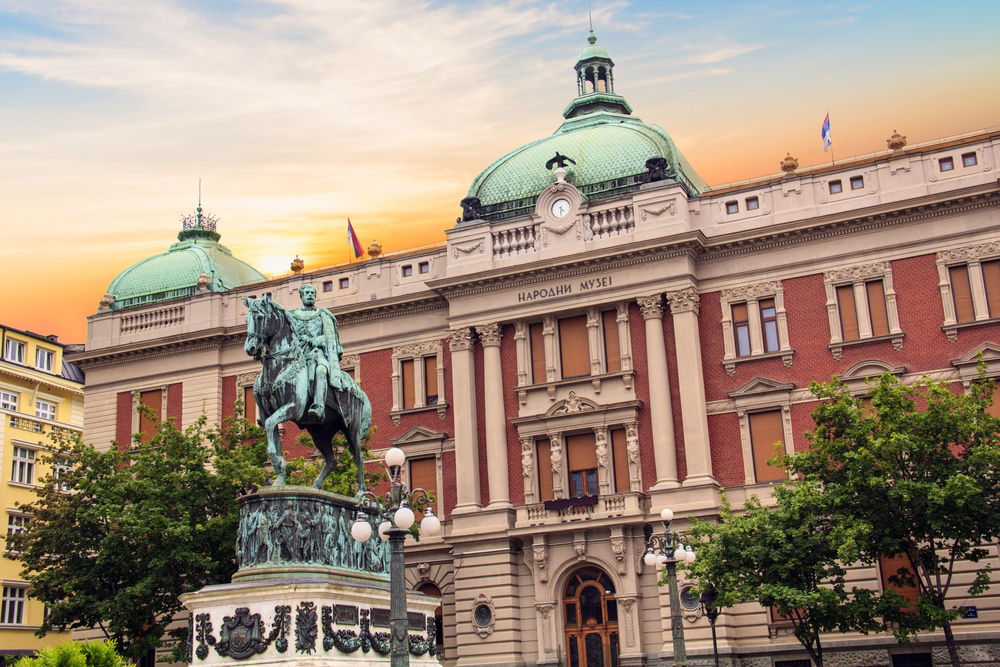[ad_1]
Written by Steve from Work Historic earlier.
The Nationwide Museum of Serbia is an important and oldest museum in Serbia. It has moved many instances in Serbia all by the use of its historic earlier and incorporates not solely Serbian artworks and nationwide treasures nevertheless furthermore a unbelievable assortment of European work.
Skip Forward To My Suggestion Correct proper right here!
Is It Price Visiting The Nationwide Museum Of Serbia In Belgrade

YES! The establishing itself is a surprising event of the Byzant-Serbian revival model. It holds 400,000 objects, and there are thirty-four collections. It’s positioned all through the cultural and political coronary coronary coronary heart of the Serbian capital, Belgrade. Correct proper right here you most likely can be taught of Serbia’s turbulent and dramatic historic earlier and revel in European work masterpieces.
About The Museum
The museum is close to Republic Sq. in Belgrade, all through the metropolis’s middle. Among the many many many shut by components of curiosity are the Nationwide Theatre and the statue of Prince Michael.
NATIONAL MUSEUM FAQ’S
- Address – Trg republike 1a, Stari grad, 11000 Belgrade, Serbia
- Museum Hours
- Tuesday: 10 am – 6 pm
- Wednesday: 10 am – 6 pm
- Thursday: 10 am – 8 pm
- Friday: 10 am – 6 pm
- Saturday: 10 am – 8 pm
- Sunday: 10 am – 6 pm
- Monday: Closed
- Public Transportation To Museum
- Station Trg Republike
- Buses: 24, 26, 27, 27E, 31, 32E, 35, 37, 43, 44, 96
- Trolleybuses: 19, 21, 22, 22Л (22L), 28, 29, 41
- Mini Buses: E2, E8
- Stations Dom Omladine & Skadarska
- Buses: 16, 58, 95
- Mini bus: E6
- Station Trg Republike
- No On Website online Parking – Park autos in public parking garages shut by
- Parking Garages
- Obilićev Venac
- Zeleni Venac
- Rajićeva
- Resort Hilton
- Parking Garages
- Ticket Worth
- 300 RDS for the everlasting assortment
- 500 RDS for non eternal exhibit
- 600 RDS for each everlasting assortment and non eternal exhibit
- 50% off ticket value for college faculty college students
- Free for teenagers 7 & beneath every single day and free for everybody on Sundays
- Guided Excursions can be found on Saturdays at 6 pm
Nationwide Museum Of Serbia In Belgrade Historic earlier
The Nationwide Museum was established in 1844 and has been held in a wide range of areas over the earlier century and a half. All by World Wrestle 1, the gathering was housed in a non-public residence, and troopers later looted it by the use of the Austro-Hungarian occupation of Belgrade.
Within the midst of the interwar interval, the gathering was saved in a rented establishing. All by WWII, the collections escaped quite lots hurt by the use of the German bombing of Belgrade in April 1941. Nonetheless, that that they had been broken by the use of the Allied bombing in 1944.
After the Communist takeover of Belgrade, the Museum was transferred to its current location, the New Palace, which was as shortly as owned by Serbian Royalty and later a financial institution. The museum was extensively renovated between 2008 and 2018. Just some of an important masterpieces all through the Museum had been donated by members of the sooner Serbian Royal household.
What To See At The Nationwide Museum Of Serbia In Belgrade

After getting determined so as in order so as to add the museum as a cease in your Belgrade factors to do itemizing, one can uncover a wonderful archaeological assortment consisting primarily of Roman, Greek, and Byzantine artifacts.
Amongst them is a nice event of the bust of the Roman Emperors Diocletian and Marcus Aurelius. There is also furthermore a powerful assortment of Historic and Roman Greek cash, together with some that had been issued by Alexander the Good.
There are furthermore good examples of weapons and armor from Classical instances. The museum has a wonderful assortment of Historic Egyptian artifacts, together with a sarcophagus and a mummy.
Among the many many many Medieval assortment are many necessary artifacts from Serbian historic earlier when the Serbs had been a crucial vitality in Japanese Europe. There are furthermore many good examples of Medieval icons and illuminated manuscripts.
The Nationwide Museum of Serbia in Belgrade has the world’s most intensive assortment of Serbian work. It furthermore notably has collections from each main European nation.
The Museum has an unimaginable assortment of Italian Renaissance work, together with masterpieces created by Raphael and Titian. On the an equivalent time, the Dutch and Flemish assortment has many masterpieces, together with one in every of many largest works of Paul Reubens. There is also furthermore a nice assortment of Russian and English work.
French work could be very well-represented and the Serbian Museum, significantly from the Impressionists, together with works by Edgar Degas, Claude Monet, and Pablo Picasso.
A very good event of an El Greco may even be housed all through the Museum together with an enormous Japanese work assortment consisting of drawings, prints, and work by greats equal to Kunisada and Toyokuni.
Prime Work In The Nationwide Museum Of Serbia

1300s
Madonna and Youngster by Paolo Veneziano (1355, oil on canvas)
Paolo da Venezia was a 14th-century painter and the founding father of the Venetian Faculty, and the official painter of the Venetian Republic. The Virgin is elegantly clothed in a deep blue cloak. She is depicted seated on a golden throne with teenager Jesus on her left knee.
Madonna with Christ on the Throne by Paolo di Giovanni Fei (1390, oil on canvas)
This triptych was painted by Paolo di Giovanni Fei, a painter of the Sienese college of Italy whose work are characterised by their good blear palette within the course of a gilded background, alongside along with his naturalistic and decorative particulars. Madonna with Christ on the Throne is the scene all through the central a part of the triptych, they normally’re depicted along with saints blessing them.
1400s
Holy Pilgrim and St. Sebastien by Vittore Carpaccio (1495)
Carpaccio was an Italian painter from Venice. On this image, we see Saint Sebastian, depicted on the precise, as an early Christian martyr killed by the use of the Diocletian’s Persecution of Christians.
He was tied to a publish or a tree after which shot with arrows that did not kill him. In response to custom-made, he was rescued by Saint Irene. Shortly after the rescue, he went to Diocletian to warn him about his sins however was clubbed to dying consequently.
A lot of the necessary pilgrimage websites in southern Germany is a Benedictine abbey that was primarily based totally on the place the place Saint Sebastian’s skull was dropped at all through the tenth century, subsequently the depiction of the Pilgrim on the left.
Adoration by Lorenzo di Credi (1487, oil on canvas)
Di Credi was an Italian Renaissance painter and sculptor who centered on religious issues.
The principle focus of this portray is Christ, mendacity on a material wanting upwards on the Virgin Mary, who’s in three-quarter view, kneeling right from him with arms in a gesture of prayer. Three angels are depicted left of them, and to the precise of the group is Saint Joseph, who’s leaning on a rock. All figures have thinly painted halos over their heads which observe the central axis of the face.
1500s
Madonna with Christ and small St. John (1500s, attributed to Raphael)
This portray is attributed to Raffaello, an architect, and painter of the Excessive Renaissance whose work, along with the works of da Vinci and Michelangelo, varieties the trinity of excellent masters of that interval. It depicts Madonna carrying a burgundy costume and darkish blue veil, wanting over at nude teenager Jesus, whereas St John is nearly with a smile wanting on the observer.
Portrait of Catherine of Austria by Titian (1556, oil on canvas)
Titian was the proper Italian Renaissance painter of the Venetian college who was acknowledged in his lifetime as a supremely proficient painter, and his fame by no means suffered a decline.
Catherine of Austria was the Queen of Portugal and the companion of King John III. This portrait depicts her all through the uppermost luxurious costume and jewellery with a canine to her left, whereas her resolve eludes confidence.
Portrait of Queen Christina of Denmark by Titian (1555–1556, oil on canvas)
This portray depicts a Danish princess and the youthful surviving daughter of King Christian II of Denmark and Norway and Isabella of Austria. Christina of Denmark served on account of the regent of Lorraine by the use of the childhood of her son and was a claimant to the thrones of Denmark, Norway, and Sweden.
Her portrait was painted by Titian, an Italian painter of the Renaissance and an important member of the Sixteenth-century Venetian college. The portray was a part of the gathering of Mary of Hungary all through the Sixteenth century and, before World Wrestle 2, was a part of the Contini Bonacossi Assortment.
1600s
Diana Presenting the Catch to Pan by Peter Paul Rubens (1615, oil on canvas)
Rubens was a Flemish artist and diplomat, primarily most likely essentially the most influential resolve of the Flemish Baroque custom-made.
Goddess Diana is depicted standing collectively alongside together with her companions before a gaggle of satyrs. Her making an attempt spear divides the fully fully completely different worlds of the 2 teams. The fruit equipped in laden baskets and the wine, blended with the gazes of half-nude figures, is also interpreted as an unambiguous erotic overture. The animals and fruits on this portray had been painted by Frans Snyders. One completely different portray in Dresden is nearly an an equivalent to the Belgrade model however is smaller in measurement.
The Music Programs by Frans van Mieris the Elder (1650, oil on canvas)
Van Mieris the Elder was a Dutch Golden Age portrait and magnificence painter. This sort scene depicts a seated girl with a sheet of musical notes in her left hand whereas a musician is exhibiting her the precise notes on the violin.
1700s
Stairway of Farnese Palace Park by Hubert Robert (1770s, oil on canvas)
Hubert Robert was a French painter of the Romanticism college who was well-known for his landscapes and capricci or semi-fictitious picturesque depictions of historic ruins in Italy and Florence. Farnese Palazzo might be going one of many necessary Excessive Renaissance palaces in Rome, and this portray depicts figures washing their garments all through the water of the fountain that has misplaced its excellence.
1800s
Rouen Cathedral by Claude Monet (1892, oil on canvas)
Monet was the founding father of impressionist portray and a key precursor to modernism. The Rouen Cathedral sequence represents a set of upper than thirty work achieved in 1892 and 1893.
All of them symbolize fully fully completely different native climate circumstances and instances of day, seen on the Cathedral. This portray may even be often called Rouen Cathedral, purple, Daylight, and divulges the doorway of the Cathedral bathing all through the morning photograph voltaic.
Portrait of Karageorge by Vladimir Borovikovsky (1816, oil on canvas)
Black George was a Serbian revolutionary who led the battle for his nation’s independence from the Ottoman Empire by the use of the First Serbian Revolt (1804-1813). Following a bloodbath of Serb chieftains by Ottoman janissaries (moreover often called Dahis), the Serbs rebelled, and Karageorge was elected to data the stand up.
The stand up was partially worthwhile and was later burdened and weakened by Napoleon’s Invasion of Russia in 1812, along with frequent infighting. Karageorge was pressured to depart Serbia in 1813 and fell ailing, bringing the First Serbian Revolt to an finish. He returned to Serbia 5 years later and was killed by brokers of a rival insurgent chief, Milosh Obrenovich.
This portrait was painted by a Russian Imperial artist who was the central resolve of the Nineteenth-century Russian Empire portrait portray.
Tahitian Woman by Paul Gauguin (1886, oil on canvas)
Gaugin was a post-Impressionist artist who’s acknowledged for his experimental use of coloration and Synthetist model. In his later years, he spent ten years in French Polynesia. Tahitian lady is an environment friendly event of Gaugin’s use of daring colours, exaggerated physique proportions, and stark contrasts that paved one of many easiest methods for the Primitivism work motion.
Place du Theatre Francais: Photograph voltaic have an effect on by Camille Pissarro (1898, oil on canvas)
Pissarro was an Impressionist and Neo-Impressionist painter. This portray belongs to a sequence of 15 work of view from the Grand Resort du Louvre in Paris, that are depictions of varied scenes of the Place du Theatre Francais, the Avenue de l’Opera, and the rue St Honore.
MORE SERBIA & MUSEUM TRAVEL BLOGS
[ad_2]

The article highlights many fascinating aspects of the National Museum of Serbia. I’m especially drawn to its extensive collections from various periods and cultures. It sounds like a great place for anyone interested in art and history.
I appreciate how this article captured both the practical details and cultural significance of visiting the National Museum of Serbia. The information about public transport options is particularly helpful for planning a visit.
The article provides a comprehensive overview of the National Museum of Serbia. I appreciate the detailed history and collection highlights. It’s clear that this museum is a significant cultural landmark in Belgrade worth visiting.
I found the information on the National Museum of Serbia quite enlightening. The architectural style described adds to its appeal, and I am particularly interested in seeing the Italian Renaissance artworks when I get the chance.
This piece does an excellent job outlining the museum’s offerings and its historical context. The extensive collection mentioned seems intriguing, especially the Roman artifacts. I might plan a visit during my next trip to Serbia.